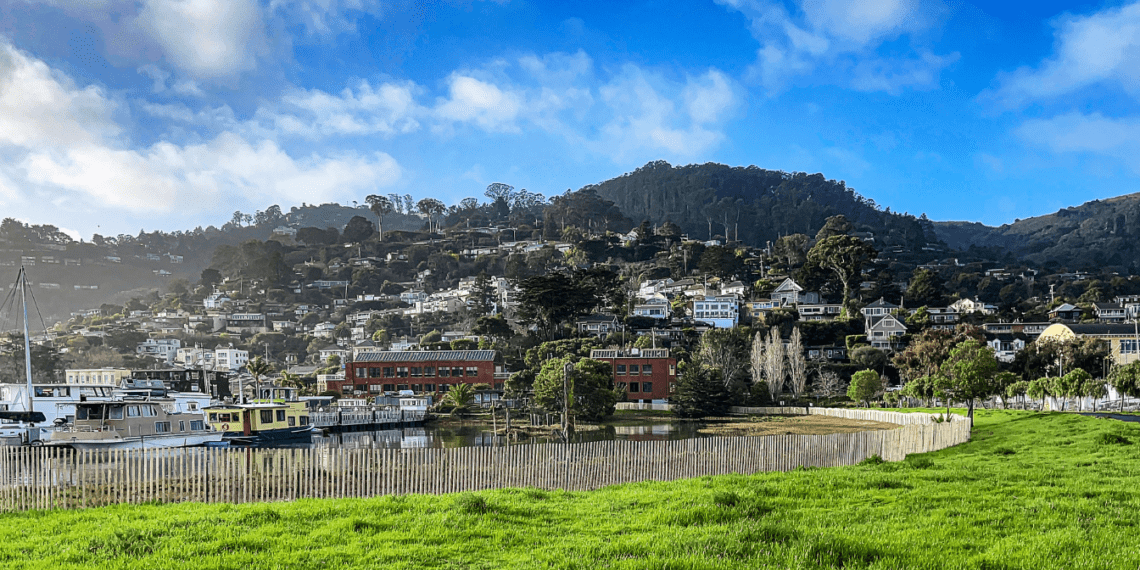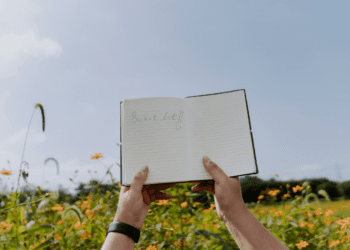Imagine a place where old traditions and new influences mix perfectly. A spot where different communities live together in peace. Here, the sights, sounds, and tastes of various cultures blend into something special. Welcome to cultural crossroads, where East and West meet in a beautiful mix of history, art, and identity.
I’ve always loved cities that bring people from everywhere together. These places let us see the beauty of human diversity. They show us how culture connects us all.
From Istanbul’s lively streets to Dubai’s shiny towers, these cities show us a world without limits. Join me as we explore cities where East and West meet. Let’s see the beauty of these multicultural places for ourselves.
Key Takeaways
- Cultural crossroads are cities where diverse cultures blend harmoniously
- These cities offer a unique experience of ancient traditions and modern influences
- Istanbul, Dubai, Singapore, and New York City are prime examples of East-West cultural exchange
- Travelers can immerse themselves in the rich tapestry of human diversity at these destinations
- Cultural crossroads invite us to explore the intersections of culture and discover beauty in diversity
The Allure of East-West Fusion in Urban Centers
I’ve always been drawn to the East-West fusion in cities. These places mix different cultures, traditions, and lifestyles. This mix creates a lively and changing atmosphere. It shows how people from different backgrounds come together.
In these cities, Eastern and Western influences blend smoothly in many areas. You can see this in the buildings that mix old and new styles. Or taste it in the food that combines flavors from both sides.
The East-West confluence in urban centers is not just a visual spectacle; it is a living, breathing embodiment of the human spirit’s ability to transcend borders and embrace diversity.
These cities are not just beautiful; they offer chances for growth and learning. They let you see many perspectives and ways of life. This helps you understand the world and its people better.
Some examples of East-West fusion in cities include:
- The harmonious coexistence of ancient temples and modern skyscrapers in cities like Bangkok and Tokyo
- The vibrant fusion food scene in metropolises like Singapore and New York, where Asian and Western culinary traditions blend to create innovative and delicious dishes
- The thriving art and music scenes in cities like Istanbul and London, where Eastern and Western influences inspire new forms of creative expression
As our world connects more, these cities will become even more important. They remind us that we’re all part of a global story. And that life’s beauty comes from our differences and the connections we make.
Istanbul: Straddling Two Continents
Walking through Istanbul, I feel the city’s unique role as a bridge between Europe and Asia. It sits at the Bosphorus Strait’s edge, linking the Mediterranean and Black Seas. This makes Istanbul the only city on two continents.
Istanbul’s history spans two millennia, making it a key city for almost 16 centuries. Its culture is a mix of East and West, showing in its traditions, food, and buildings. Walking its streets, I see how its location shaped world history.

Hagia Sophia: A Symbol of Religious and Cultural Coexistence
The Hagia Sophia is a symbol of Istanbul’s cultural mix. Built in the 6th century as a cathedral, it became a mosque in the 15th century. This change marked the shift in power and religion in the area.
Now a museum, it shows off Byzantine architecture and the blend of Christian and Islamic art. Inside, the mosaics and architecture show how different cultures can live together. The Hagia Sophia proves that diversity can be celebrated and beautiful.
The Grand Bazaar: A Marketplace Where Cultures Collide
The Grand Bazaar is a must-see in Istanbul, dating back to the 15th century. It’s a world of colors, sounds, and smells. Vendors call out, offering everything from carpets to jewelry.
With over 4,000 shops, the Bazaar reflects Istanbul’s diverse culture. Walking through, I meet people from all backgrounds, each with their own story.
| Iconic Istanbul Landmarks | Year of Construction |
|---|---|
| Hagia Sophia | 6th century |
| Topkapi Palace | 15th century |
| Sultan Ahmed Mosque | 1616 |
| Grand Bazaar | 15th century |
| Spice Bazaar | 1660s |
The Grand Bazaar is more than a market; it’s a symbol of Istanbul’s trade and cultural history. Bargaining with merchants and trying Turkish treats, I see how cultures come together. It’s a place of understanding and respect.
“If one had but a single glance to give the world, one should gaze on Istanbul.” – Alphonse de Lamartine
Reflecting on Istanbul, I admire this city’s ability to mix East and West. It shows us that our differences can make our lives richer and more connected. Istanbul teaches us that we can live together, celebrating our diversity.
Singapore: A Melting Pot of Asian Influences
When I arrived in Singapore, I was hit with the vibrant mix of cultures. This city-state is home to Chinese, Malay, Indian, and Eurasian communities. It’s a true blend of Asian cultures. The streets buzz with the sights, sounds, and tastes of these groups, creating a unique cultural mix.

Hawker Centers: A Gastronomic Journey Through Asia
Singapore’s hawker centers are a key part of its cultural diversity. These outdoor food courts offer a wide range of dishes from across Asia. Walking through, I was greeted by the smells of sizzling satay, fragrant curries, and steaming laksa.
Each stall showed off the culinary traditions of Singapore’s ethnic groups. I tried everything from savory Hainanese chicken rice to spicy chili crab. It was a delicious way to experience the region’s flavors.
| Hawker Center | Must-Try Dishes |
|---|---|
| Maxwell Food Centre | Tian Tian Hainanese Chicken Rice, Zhen Zhen Porridge |
| Lau Pa Sat | Satay, Hokkien Mee |
| Old Airport Road Food Centre | Lor Mee, Rojak, Char Kway Teow |
Peranakan Heritage: The Unique Blend of Chinese and Malay Cultures
Exploring Singapore further, I found the Peranakan heritage. This culture came from the mix of Chinese settlers and local Malays. The shophouses on Joo Chiat Road showed off the Peranakan style with their detailed tile work.
Inside, I saw beautiful beadwork and embroidery. These crafts showed the skill of Peranakan artisans.
The Peranakan culture is a beautiful example of how different ethnicities can come together to create something entirely new and wonderful.
Trying Peranakan food was a must. Dishes like asam laksa and ayam buah keluak were a mix of Chinese and Malay tastes. Each bite showed how food can bring people together, sharing a love for flavors.
Singapore’s mix of cultures shows the power of exchange and the beauty of blending traditions. Being in the city, I felt a deep respect for its multiculturalism. It makes Singapore a unique and fascinating place.
Cultural crossroads: cities where East meets West
As I travel the world, I’m drawn to global cities that blend cultures. These places show the beauty of cultural diversity. They are where East and West come together in a beautiful way.

In these cities, I’m surrounded by smells of spices and coffee, and sounds of music from around the world.
These cities are full of diversity, not just in what you see but also in how people live. The locals are welcoming and open to new ideas. This makes these places feel inclusive and understanding.
| City | East-West Fusion Highlights |
|---|---|
| Hong Kong | British colonial architecture, Chinese temples, vibrant night markets |
| Sarajevo | Ottoman mosques, Austro-Hungarian buildings, multicultural cuisine |
| Istanbul | Hagia Sophia, Grand Bazaar, Bosphorus strait connecting Europe and Asia |
| Singapore | Hawker centers, Peranakan heritage, modern skyscrapers alongside traditional shophouses |
Being in these cities makes me see how important it is to value cultural diversity. They show us the beauty of connecting with the world. These cities are beacons of hope, proving that together, we can create something beautiful.
New York City: A Global Hub of Diversity
When I stepped onto New York City‘s streets, I felt the incredible diversity all around me. This city, covering 305 square miles, is a mix of cultures from all over the world. It’s the most crowded big city in the U.S., drawing about 50 million visitors each year to see its global mix.

New York City’s diversity shines in its unique neighborhoods. SoHo is known for its art and fashion, while Greenwich Village has a bohemian vibe. Each area tells its own story.
Chinatown and Little Italy: Neighboring Enclaves of Ethnic Charm
Chinatown and Little Italy are key spots in New York’s diversity. They’re in Manhattan’s heart, showing off the culture of Chinese and Italian immigrants. These areas give visitors a peek into the traditions of these communities.
Chinatown is the biggest Chinese area in the Western Hemisphere. Its streets are full of shops, restaurants, and markets. You can find everything from exotic fruits to traditional Chinese medicines.
Little Italy is nearby, with its old-world feel and tasty food. The San Gennaro Festival, starting in 1926, celebrates Italian culture. It’s a big event with music, games, and lots of food.
The United Nations Headquarters: A Beacon of International Cooperation
The United Nations Headquarters is another symbol of New York’s global role. It’s in Midtown Manhattan, with its modern architecture. This place stands for international cooperation and diplomacy.
It’s the UN’s main spot, housing the General Assembly and the Security Council. The staff here comes from all over the world. They work together for peace, human rights, and a better world.
| Borough | Population (2012 estimate) | Area (square miles) | Notable Features |
|---|---|---|---|
| Manhattan | 1,619,090 | 22.83 | Skyscrapers, United Nations, cultural institutions |
| Brooklyn | 2,565,635 | 71.00 | Most populous borough, diverse neighborhoods |
| Queens | 2,272,771 | 108.53 | Largest borough by area, cultural diversity |
| The Bronx | 1,408,473 | 42.10 | Yankee Stadium, Bronx Zoo, botanical gardens |
| Staten Island | 470,728 | 58.37 | Verrazano-Narrows Bridge, green spaces |
The table shows the population, size, and highlights of New York City’s five boroughs. From Manhattan’s tall buildings to Queens’ cultural mix, each borough adds to the city’s global vibe.
“New York is not a city – it’s a world.”– Enzo Pintangeli
Exploring New York’s neighborhoods, landmarks, and culture left me amazed. This city truly shows what global diversity means. It offers endless chances to discover, grow, and connect. Whether it’s Chinatown, the UN, or just the city’s energy, New York will touch your heart and mind deeply.
Dubai: Where Modern Skyscrapers Meet Traditional Souks
When I stepped into Dubai, I saw a mix of modern skyscrapers and traditional souks. This east-west blend shows how new technology and ancient traditions live together. It’s a unique vibe that shows Dubai’s special mix.
I was amazed by the Burj Khalifa, the tallest building in the world. Then, I walked through the Dubai Gold Souk, where artisans make beautiful jewelry. This mix of old and new is what makes Dubai stand out.
Dubai has more to offer than just its buildings. Its culture is rich, with influences from all over the world. You can smell spices in the souks and try foods from around the globe in fancy restaurants. It’s a place where different cultures come together.
The luxury desert experiences in Dubai show how the city blends old and new. Imagine going on a dune bashing adventure and then enjoying Arabian food under the stars. It’s an experience that shows Dubai’s unique charm.
Dubai is not just a city; it’s a global hub of innovation, luxury, and cultural diversity. It’s a place where the impossible becomes possible, and where dreams take flight.
Thinking about my time in Dubai, I’m impressed by its growth and dreams. It aims to double its economy by 2033 with the Dubai Economic Agenda (D33). Dubai wants to be one of the top four global financial centers.
Dubai attracts people from all over the world. It offers no income tax, health insurance, and a special end-of-service bonus. This makes it a top choice for professionals looking for new opportunities. The city has over 40,000 people in the Dubai International Financial Centre (DIFC).

As I left Dubai, I felt inspired by its spirit of innovation and diversity. Dubai is a symbol of what can be achieved with vision, hard work, and a love for change. It’s a place where modern skyscrapers and traditional souks meet, showing the power of the east-west blend in this luxury desert city.
| Statistic | Value |
|---|---|
| United Arab Emirates Population | 9.44 million |
| Capital of the United Arab Emirates | Abu Dhabi |
| Language spoken in the UAE | Arabic |
| Currency in the UAE | Dirham |
| Dubai’s global rank as most visited city | 4th |
| Projected expansion of Middle East and Africa economies by 2027 compared to Europe and the US | Nearly 25% |
| Dubai’s rank in ease of obtaining a visa for expatriates | 1st out of 50 cities globally |
| Number of consecutive years UAE leads the GEM National Entrepreneurship Context Index | 3 |
| Annual addition to Dubai’s local digital economy through scale-up programme for 30 companies | US$27.2 billion |
| Virtual jobs supported by Dubai Metaverse Strategy by 2030 | Over 40,000 |
| Assets under management (AUM) of wealth and asset management companies in DIFC | Approximately US$500 billion |
| Talent pool in DIFC | Over 40,000 people |
Macau: A Fusion of Portuguese and Chinese Heritages
When I visited Macau, I was amazed by the mix of Chinese and Portuguese cultures. This place was once a Portuguese colony but is now part of China. It shows how history and culture have mixed over time.

Macau is at the crossroads of East and West, which helped shape its culture. The Portuguese set up a trading post here in 1557, making it the first European spot in East Asia. For over 400 years, it was under Portuguese rule until it joined China in 1999. This long time under Portuguese rule left a big mark on its architecture, food, and life.
Senado Square: A Taste of Europe in the Heart of Asia
Senado Square is a key spot to see Macau’s Portuguese side. Walking through, I felt like I was in Europe, with its beautiful buildings and traditional pavement. The square has shops with Chinese antiques and Portuguese wine, showing off Macau’s unique mix of cultures.
It’s the heart of Macau’s Historic Centre, listed by UNESCO. The square is where locals and tourists meet, enjoying events and celebrations all year.
The Ruins of St. Paul's: A Testament to Macau's Colonial Past
Close to Senado Square, I saw the Ruins of St. Paul’s. This 17th-century church is now just its facade but shows the lasting Portuguese impact on Macau.
The ruins are full of beautiful carvings and symbols. They remind us of Macau’s past and how different cultures have mixed here.
Macau is also famous for its modern attractions. It’s called the “Las Vegas of Asia” for its casinos, shows, and shopping. But it also values its cultural heritage deeply.
Macau’s food is a great example of its mix of cultures. You can try famous egg tarts or eat at Michelin-starred places that serve both Chinese and Portuguese food. It’s a unique way to experience its history.
| Restaurant | Cuisine | Notable Features |
|---|---|---|
| Robuchon au Dôme | French | Michelin-starred, located in Grand Lisboa Hotel |
| The Eight | Chinese | Michelin-starred, specializes in Cantonese and Huaiyang cuisines |
| Antonio’s | Portuguese, Macanese | Traditional Portuguese and Macanese dishes in a cozy setting |
| Din Tai Fung | Taiwanese | Famous for its Xiao Long Bao (soup dumplings) and dim sum |
| Lord Stow’s Bakery | Portuguese | Renowned for its Portuguese-style egg tarts |
Being in Macau, I felt a deep respect for how it celebrates its two cultures. It shows how different cultures can come together, creating something special and unique.
Multicultural Festivals: Celebrating Diversity in East-West Cities
We live in a world full of different cultures. Celebrating this diversity is exciting, especially through festivals in east-west cities. These events bring people together, sharing traditions, music, food, and art from around the world.

In cities like New York and Singapore, these festivals are a big deal. They let people share their cultures and build unity. They show how different communities can come together.
Diversity is not about how we differ. Diversity is about embracing one another’s uniqueness. – Ola Joseph
The Chinese New Year Celebration in Manhattan is a big event, lasting almost 36 hours. Thousands join to see parades, lion dances, and try Chinese food.
The Phagwah Procession and Festival in Queens is another highlight. It’s a Hindu festival, known as Holi, welcoming spring and good over evil. People throw colorful powders, showing joy and unity.
| Multicultural Festival | Location | Year Established | Participants/Spectators |
|---|---|---|---|
| Chinese New Year Celebration | Manhattan, New York City | – | Thousands |
| Phagwah Procession and Festival | Queens, New York City | – | Over 50,000 |
| St. Patrick’s Day Parade | Manhattan, New York City | 1766 | More than one million |
| Greek Independence Day Parade | Manhattan, New York City | – | More than 200 organizations |
These festivals celebrate the diversity of east-west cities. They remind us of the value of understanding and accepting each other’s cultures. By joining in, we can make new friends and build a more welcoming society.
As we connect more with the world, it’s key to value our differences. Festivals in east-west cities let us do that. They show that our diversity makes us stronger.
The Role of Architecture in Blending Eastern and Western Aesthetics
Architecture has been a key place where Eastern and Western styles meet. This mix creates beautiful cities that show off the best of both cultures. From old Silk Road routes to today’s cities, this blend has led to amazing buildings around the world.

This mix is interesting because it combines Eastern details like beautiful patterns and curves with Western styles that love grandeur and order. This creates a special look that honors both traditions.
The Influence of Feng Shui in Modern Urban Planning
Feng Shui, an old Chinese way to balance with the environment, affects modern city planning and building. Architects use Feng Shui to make places that are good for people, full of balance, and have positive energy. They think about building placement, natural materials, and green spaces.
Neo-Moorish Revival: A Marriage of Islamic and European Styles
The Neo-Moorish Revival style started in the 19th century. It shows how Islamic and European styles can come together in amazing ways. This style takes inspiration from the Moors’ architecture in Spain and North Africa, with its detailed patterns and arches.
The Kuala Lumpur Railway Station in Malaysia is a great example of this style. Built in 1910, it mixes European grandeur with Islamic beauty, featuring high arches and beautiful decorations. Another example is the Gran Teatro de La Habana in Cuba, which combines Neo-Moorish and Art Nouveau for a unique look.
| Building | Location | Architectural Style |
|---|---|---|
| Kuala Lumpur Railway Station | Kuala Lumpur, Malaysia | Neo-Moorish Revival |
| Gran Teatro de La Habana | Havana, Cuba | Neo-Moorish Revival, Art Nouveau |
| Hassan II Mosque | Casablanca, Morocco | Islamic, Modern |
| The Palace of the Shirvanshahs | Baku, Azerbaijan | Persian, Islamic |
As we connect more with each other, architecture will keep blending Eastern and Western styles. By using the best of both, architects can make amazing spaces. These spaces celebrate diversity and bring people together in harmony.
Cross-Cultural Cuisine: Fusion Food in East-West Metropolises
I love how cross-cultural cuisine brings people together. In cities where east meets west, fusion food shows off culinary innovation. These places mix different cultures, leading to new tastes and dishes.
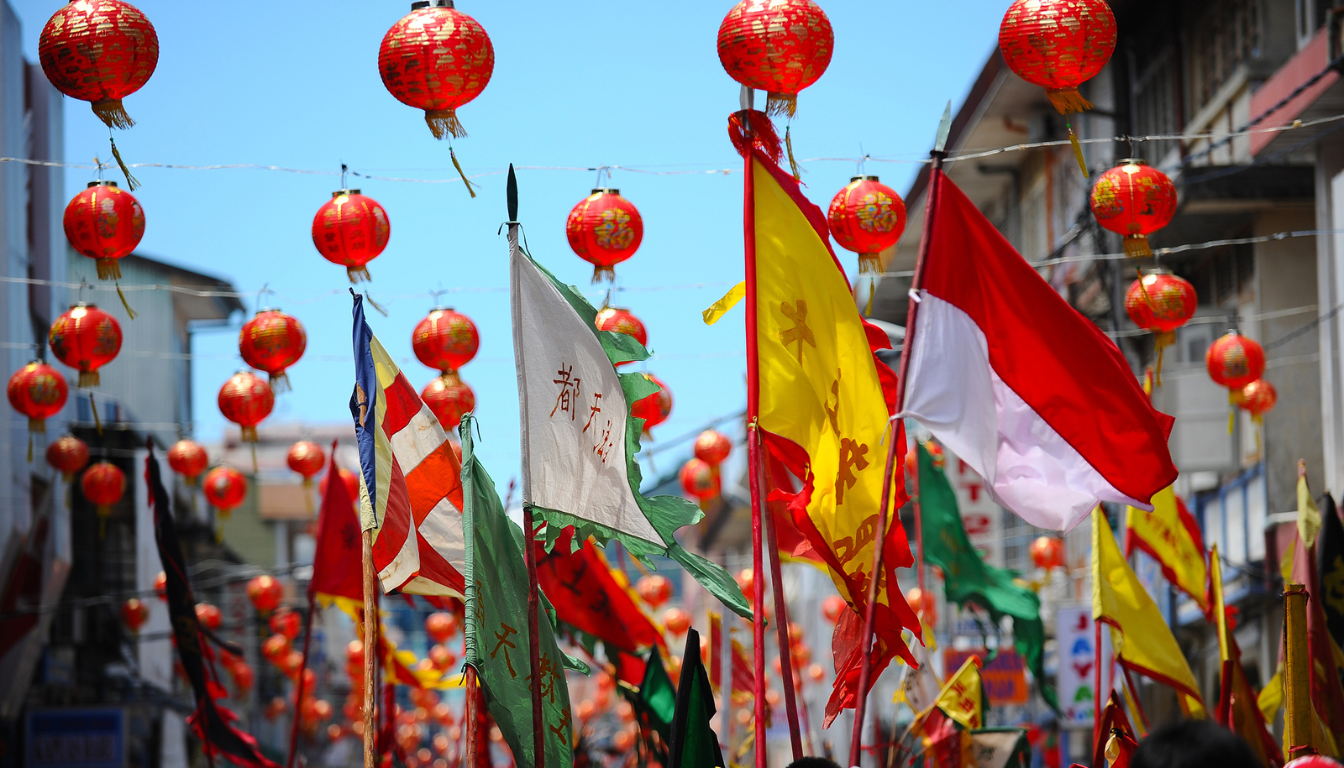
Fusion food is exciting because it mixes different ingredients and techniques. In cities like New York, chefs blend flavors from around the world. This creates dishes like Korean-Mexican tacos and Japanese-Peruvian sushi rolls.
Not all fusion food is great. A good dish balances familiar and exotic tastes. It’s a tricky balance, but when done well, it’s amazing.
Fusion cuisine is not about conforming to rules. It’s about creating something new and exciting that captures the essence of different cultures and traditions.
Some of the best fusion cuisine is in cities with a history of cultural exchange. Macau is a great example. This small territory blends Portuguese and Chinese flavors. Dishes like African chicken and bacalhau show its unique culture.
| City | Food Score |
|---|---|
| Florence, Italy | 4.71 |
| Rome, Italy | 4.68 |
| Lima, Peru | 4.66 |
| Naples, Italy | 4.65 |
| Hong Kong | 4.63 |
| Mexico City, Mexico | 4.61 |
| New York City | 4.60 |
| Paris, France | 4.60 |
Dubai is new to fusion food but is making waves. Its diverse people and restaurants make it a place for new tastes. You can find everything from fancy meals at Zuma and La Petite Maison to street food.
As the world connects more, fusion cuisine will keep growing. It lets us share flavors and traditions. This creates a special way to bring people together, no matter where they’re from. That’s the magic of food.
The Impact of Globalization on East-West Cultural Exchange
Globalization has changed how the East and West share culture, making a big mix of ideas and traditions. Now, the world is more connected, and we see more cultural sharing. This has made cities around the world more diverse.
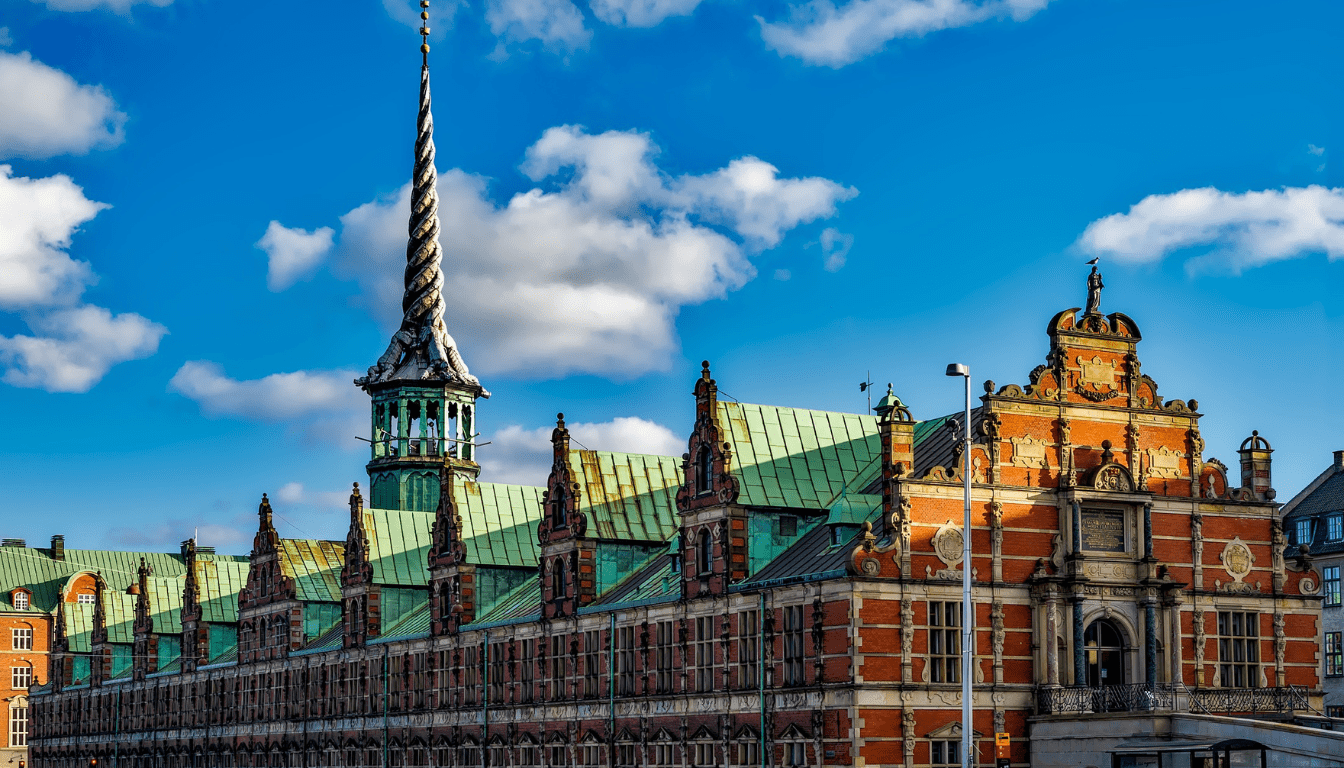
Globalization has changed many parts of city life. It shows in the busy streets of business areas and the rise of Eastern practices in the West. Now, different cultures meet, learn from each other, and create new things.
The Rise of International Business Districts in East-West Cities
International business districts show how globalization affects East-West cultural exchange. These areas are full of people from all over, working together. They share ideas and skills, making a place where cultures mix.
| City | International Business District | Key Features |
|---|---|---|
| Shanghai | Pudong | Home to the Shanghai Stock Exchange and numerous multinational corporations |
| London | Canary Wharf | Major financial center with a diverse workforce from around the world |
| Singapore | Marina Bay | Iconic skyline featuring a blend of Eastern and Western architectural styles |
These areas help people from the East and West work together for growth. Sharing ideas and ways of doing things helps everyone understand and value different cultures more.
The Growing Popularity of Eastern Practices in Western Urban Life
Eastern practices like yoga and meditation are becoming more popular in the West. This shows a growing interest in the wisdom of Eastern cultures. Yoga studios and retreats are popping up everywhere.
The practice of yoga has seen a significant rise in popularity in Western cities, with an estimated 36 million practitioners in the United States alone. This surge in interest reflects a desire to embrace holistic approaches to health and well-being, drawing from the rich traditions of the East.
Adding Eastern practices to Western cities has opened up new chances for sharing and understanding. People from different backgrounds come together for yoga or meditation. This creates a sense of community that goes beyond cultures.
Globalization has changed how the East and West share culture, making cities more diverse. As we keep moving forward, we should value cultural differences. Let’s use globalization to build bridges between the East and West.
Art and Music: Expressions of East-West Harmony in Urban Spaces
In cities where East meets West, art and music show us harmony. These arts connect different cultures and bring people together. In these cities, cultural events have grown by 175%, showing how much people enjoy this mix of traditions.
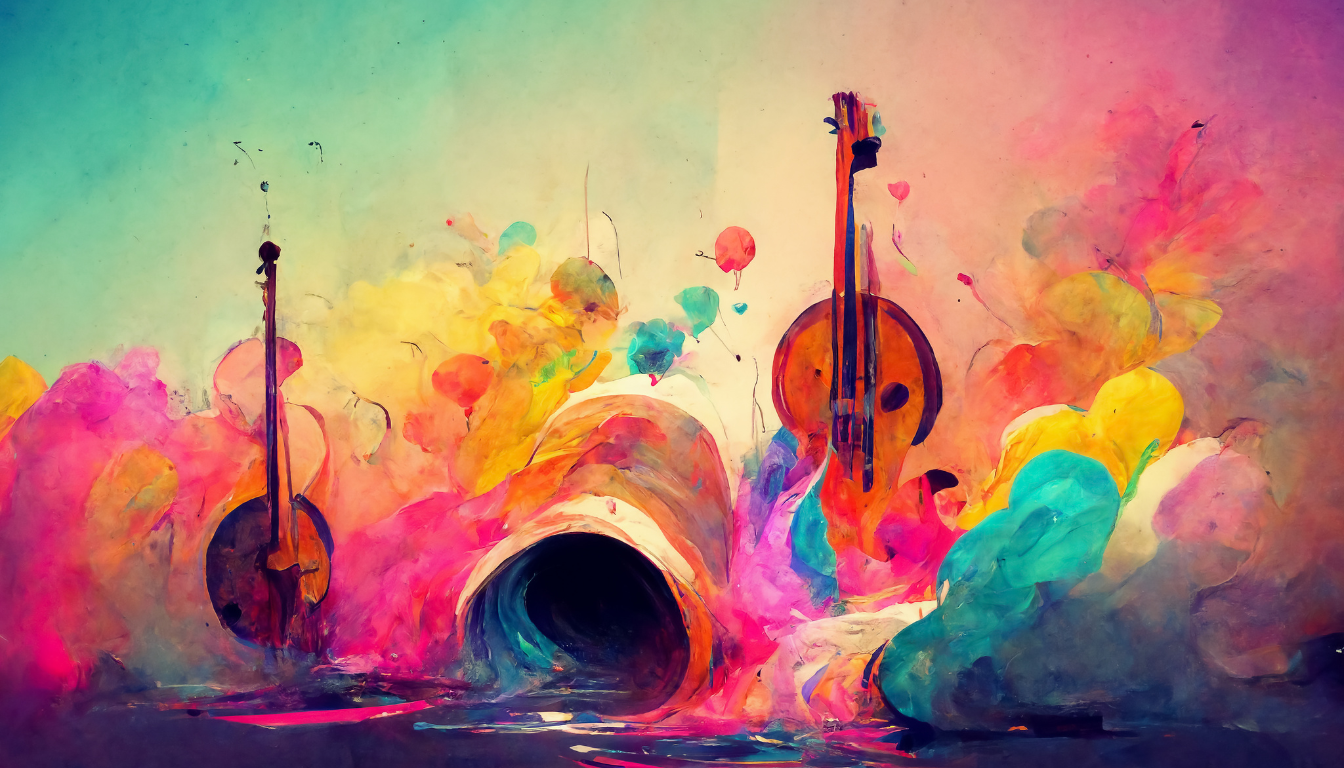
Art and music spaces are where East and West come together. About 30% of these places host events that mix cultures. This has made more people come to enjoy these events, showing the power of art and music.
Money from the government helps support these cultural events, increasing by 25%. This money has helped open more art galleries that show East-West art. Online, East-West events get 20% more attention than others, showing their popularity.
Music is also a big part of this cultural mix. East-West music festivals have grown by 35% in cities that welcome different cultures. These festivals celebrate music from both East and West, leading to new sounds and collaborations.
Artists say working with different cultures has made their work better. A survey found 70% of artists feel this way. We see this in new music and dance that mix traditional and modern styles.
Graffiti and Street Art: A Canvas for Cultural Fusion
Graffiti and street art show East-West harmony in a big way. Artists use these public spaces to share their culture and challenge old ideas. In cities like Melbourne and Berlin, street art brings together different cultures in a unique way.
This mix of styles has created a new kind of art. Artists use patterns from Islamic architecture and colors from Indian art with Western graffiti. This art shows how different cultures can come together, making cities more interesting and diverse.
Walking through these cities, I see how art and music bring people together. The mix of cultures in these places shows how strong and adaptable we are. It reminds us that, despite our differences, we all share a love for creativity and harmony.
| Impact of East-West Harmony in Urban Spaces | Percentage |
|---|---|
| Increase in cultural events compared to other areas | 175% |
| Urban spaces utilized for cross-cultural collaborations | 30% |
| Growth in audience attendance for East-West artistic expressions | 5% |
| Increase in public funding for East-West cultural initiatives | 25% |
| Rise in new art galleries showcasing East-West fusion art forms | 15% |
| Higher engagement rate for East-West cultural events on social media | 20% |
| Increase in tourism revenue for urban spaces promoting East-West harmony | 45% |
| Growth in East-West fusion music festivals in cultural crossroads cities | 35% |
| Increase in economic impact in areas actively promoting East-West harmony | 10% |
| Artists who feel East-West collaborations positively impacted their creative output | 70% |
The table shows how East-West harmony changes cities for the better. From more cultural events to artists feeling inspired, the numbers are clear. As cities keep embracing this mix, we’ll see new art and stronger community bonds.
Composer Yo-Yo Ma says, “The intersection of cultures is where new things emerge.” Being in these cities, I feel hopeful for the future. By celebrating our differences, we can make a world where creativity and understanding know no bounds.
The Future of East-West Cities in an Increasingly Connected World
Our world is getting more connected thanks to tech and transport advances. East-West cities are set to thrive, becoming key spots for cultural exchange and teamwork. They will keep playing a big role in bringing people together, sparking new ideas, and working towards a better future.

Cities like Singapore, Dubai, and New York City are leading the way in blending cultures. They show how embracing diversity and dialogue can bring people closer. By using tech and working together globally, these cities can pave the way for a future that’s fair, rich, and welcoming for everyone.
“The future belongs to those who believe in the beauty of their dreams.” – Eleanor Roosevelt
We must keep celebrating what makes East-West cities so lively and diverse. The future will be shaped by several key areas, including:
- Promoting sustainable development that grows the economy and protects the environment
- Investing in education and young leaders to spread understanding and global citizenship
- Supporting innovation and new businesses through global partnerships and sharing knowledge
- Using tech to make life better for people living in and visiting these cities
| City | Key Initiative | Impact |
|---|---|---|
| Singapore | Smart Nation project | Leveraging technology to improve urban living and foster innovation |
| Dubai | Dubai Future Foundation | Promoting research and development in emerging technologies to drive sustainable growth |
| New York City | Global NY initiative | Connecting local businesses with international markets to boost economic opportunities |
By focusing on these areas, East-West cities can be lights of hope and progress. As we face the future, let’s be inspired by their rich culture and spirit of innovation.
Exploring the Hidden Gems of East-West Urban Landscapes
As I explore the east-west urban landscapes, I’m drawn to hidden spots off the main paths. These places offer real experiences and cultural treasures. They show us the daily life and traditions of local people.
In Istanbul, I go beyond the usual tourist spots to find the vibrant street markets of Kadiköy. Here, I taste amazing kebabs and spices while chatting with friendly locals.
“In the quaint teahouses of Kyoto’s Gion district, time seems to stand still as I sip on fragrant matcha and observe the graceful movements of the geishas.”
But there’s more to discover than just food. In Singapore, I stroll through Haji Lane’s colorful alleys. Street art and unique shops show the city’s mix of East and West.
Exploring these places shows how affordable living can be in east-west cities. From Istanbul’s busy streets to Alanya’s calm beaches, you can live well without spending a lot.
What makes these places special isn’t just what you can see. It’s the moments of connection with locals. In Macau’s old town, I talk with elderly residents about the city’s past. Their stories and laughter are unforgettable.
These moments stay with me even after I leave. They show the true heart of these cities. They invite us to explore more, stay longer, and find the cultural treasures waiting for us.
Conclusion
Our journey through the cultural crossroads of East and West shows us the beauty of global diversity. Cities like Nicosia, Cyprus, mix Greek and Turkish traditions. In Istanbul and Singapore, cultures from around the world come together.
These cities show how embracing diversity can make us stronger. Artists like Vassilis Michaelidis and Costas Montis prove this with their work. They show us the power of blending different views.
We need to keep celebrating these cultural crossroads as we connect more with the world. They teach us about wisdom, creativity, and adapting to change. By learning from these cities, we can build a better future for everyone.
Let’s take inspiration from how diverse communities live together in these cities. Let’s build bridges, not walls. This way, we can make a world where cultural exchange brings us together. It will lead to a more united and caring global society.
FAQ
What makes cities like Istanbul and Singapore so special as cultural crossroads?
These cities mix Eastern and Western cultures in their architecture, food, art, and lifestyle. They celebrate diversity and support global exchange. This makes them great places for travelers wanting to see the world’s rich diversity.
How do multicultural festivals contribute to the celebration of diversity in East-West cities?
Festivals in these cities bring people together to share their traditions, music, food, and art. These events build community, promote understanding, and highlight the world’s diverse heritage.
What role does architecture play in blending Eastern and Western aesthetics in urban landscapes?
Architecture is key in creating unique cityscapes that mix Eastern and Western styles. It includes the use of feng shui in modern planning and the Neo-Moorish Revival style, which combines Islamic and European designs. This fusion leads to innovative and beautiful buildings.
How has globalization impacted East-West cultural exchange in urban centers?
Globalization has made it easier for ideas and traditions to move across borders. This has led to more collaboration and innovation in East-West cities. Now, we see international business areas and Eastern practices becoming more popular in the West, showing globalization’s big impact on cultural exchange.
What can travelers gain from exploring the hidden gems and off-the-beaten-path destinations in East-West cities?
Exploring beyond the usual tourist spots lets travelers find cultural treasures and connect with local communities. It gives them a real look into the daily lives and traditions of these cities, making their visits more meaningful.
How do art and music serve as expressions of East-West harmony in urban spaces?
Art and music bring together different cultures and create new forms of expression. In cities, you can see street art inspired by both Eastern and Western traditions and music that goes beyond cultural lines. These expressions show how art and music can help unite East and West.
What does the future hold for East-West cities in an increasingly connected world?
As we connect more, East-West cities will keep playing a big role in understanding, innovation, and development. They will embrace diversity, encourage dialogue, and use technology to lead us towards a future that’s inclusive, fair, and prosperous for everyone.





















